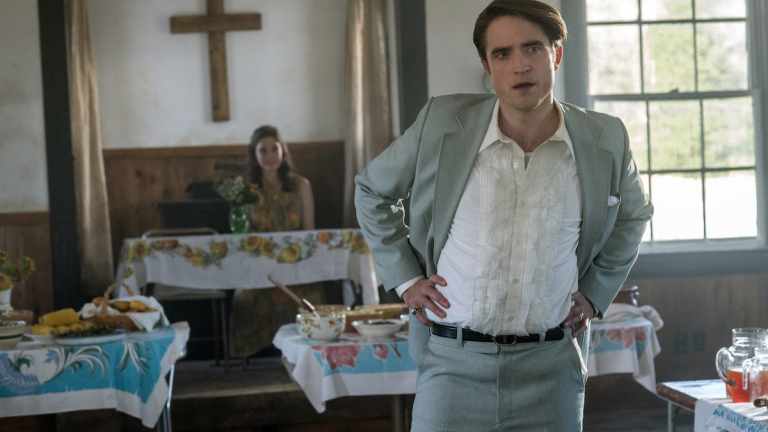“The Devil All the Time”
Release Date: September 16, 2020
Runtime: 136 mins
Directed by: Antonio Campos
Starring: Tom Holland
Robert Pattinson
Bill Skarsgård
Riley Keough
“The Devil All the Time” suffers from some of the more obnoxious narration I have heard in a movie this year. The narrative tells us things that are almost immediately revealed through dialogue or images. For example, one scene reveals the fate of a character through narration like, “Little did she know, she would never see her daughter again. They found her body out in the woods seven years later.” However, the movie undercuts the impact of this narrative method when it chooses to show what happens to this character a few scenes later. It is redundant. At other times, the narration gives information which should have been given through visuals or dialogue. The line of narration, “He felt the terror of his victims brought him closer to God,” emulates this lazy narration style. Prior to and after this line, we receive little indication of these emotions, and this narration essentially removes the work of characterization by telling us the point outright. I personally would have enjoyed the movie far more if the narration were eliminated entirely.
Despite these issues, I did admire the narrative ambition of “The Devil All the Time.” A generation-spanning epic incorporating many characters in different locations is certainly no easy feat to pull off. It also manages to maintain an atmosphere of Southern Gothic melancholy and dread throughout its entire runtime. For this same reason, it is not a movie I would recommend to everyone.
Nearly all the major characters in the film have some sort of trait or conflict which serves to represent the main running theme of the corruption of Christianity. The movie postulates that people misuse and abuse the Bible’s teachings to gain power over others or to seek glory for themselves. These themes are most efficiently and effectively explored in the character of Preacher Teagardin (Robert Pattinson). Pattinson plays the character with a distinctly scummy strain of Southern charm which exudes from the screen. Some might say he goes too over-the-top, but I felt it perfectly befit the character. His character introduction involving a Christ-like sacrifice to take upon himself the burden of a plate of chicken livers is probably my favorite scene in the movie. Other characters in the film embody aspects of this theme, such as the revivalist style preacher Roy Laferty, but none are as fully realized as Teagardin. Apart from these, there are the people who are caught in the middle, trying to follow God the best they know how. These characters, including Willard and Arvin Russell and Lenora Laferty, make up the protagonists of the movie.
One effective visual theme was the repetition of an upward shot through the trees. This technique was used to communicate the last thing seen by someone as they lay dying on the ground and the unsolvable mystery of what comes afterwards.
The selection of old Southern gospel music in the movie’s soundtrack supports these themes. It creates a mood that further indicates the crucial role church and religion play in these characters’ lives. Plus, I was starting to get down with the aesthetic after a while.
I feel “The Devil All the Time” could have been more successful at what it is trying to be if it were a mini-series. The main part of the story following the Russell family, particularly Arvin, is pretty well fleshed out. However, the side characters, such as the police chief and the couple, feel severely underdeveloped and the third act would certainly be more effective if more time had been spent with them.











Be First to Comment